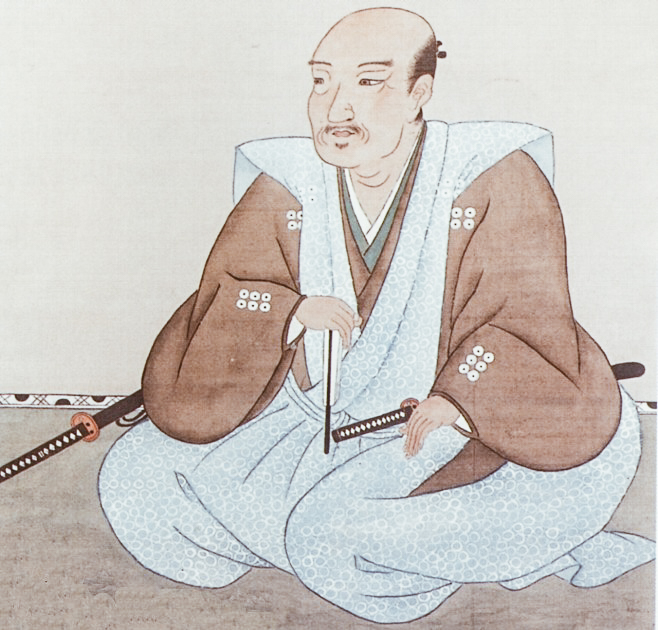
photo credits: wikipedia.org
Sanada (Yukimura) Nobushige era uno dei più grandi samurai del periodo Sengoku. Secondogenito di Sanada Masayuki e fratello minore di Sanada Nobuyuki, non fu mai chiamato “Yukimura” durante la sua vita, poiché il suo vero nome era Nobushige. Sembra che Yukimura sia stato ottenuto durante la fine del periodo Edo. Conosciuto come “Crimson Demon of War” per i suoi striscioni rosso sangue e l’armatura rossa, è stato anche riconosciuto come “il più grande guerriero del Giappone” e persino “L’ultimo eroe Sengoku” dai suoi pari.
Da giovane era stato mandato da suo padre come ostaggio del clan degli Uesugi in cambio del sostegno di Uesugi contro i Tokugawa. Il padre che più tardi si schierò con Toyotomi Hideyoshi, come aveva fatto Uesugi, gli permise di tornare a casa da Ueda.
Sanada Nobushige ha servito direttamente Hideyoshi. La sua prima moglie, Aki-hime, era la figlia di Otani Yoshitsugu anche se adottata da Toyotomi Hideyoshi. Nobushige ebbe sette figlie e tre figli con quattro mogli, l’ultimo nato due mesi dopo la morte del padre.
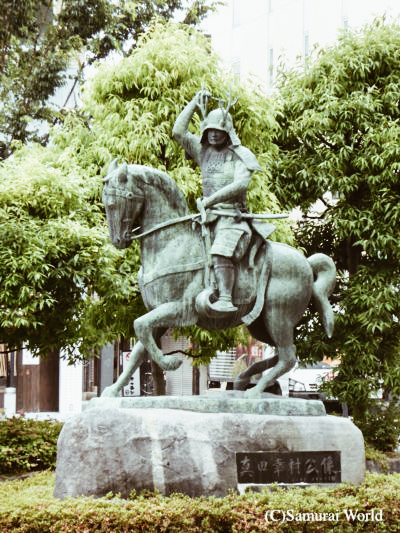
photo credits: samurai-world.com
Il castello di Ueda, costruito nel 1583, era la casa del clan Sanada. Il fatto che fosse ben costruito fu provato per la prima volta nel 1583, quando il castello resistette all’attacco di una forza Tokugawa numericamente superiore. La sconfitta sarebbe stata imbarazzante per i Tokugawa nel futuro. Un altro simile assedio del castello di Ueda nel 1600 al tempo della battaglia di Sekigahara vide anche Tokugawa Hidetada, figlio ed erede di Ieyasu, che ha guidato il suo esercito lungo Nakasendo, strategicamente importante. Lungo la strada, si fermò e assediò il castello di Ueda. Nonostante ci fosse una grande distanza dal campo di battaglia di Sekigahara, gli eventi al castello di Ueda avrebbero quasi distrutto le intenzioni delle legioni Tokugawa. I Sanada resistettero abbastanza a lungo perché Hidetada arrivasse in ritardo alla battaglia stessa, privando Tokugawa di circa 38.000 uomini. Nobushige comandava solo 2.000 uomini all’interno del castello.
Sanada Masayuki e suo figlio Nobushige mantennero il castello di Ueda come alleato delle forze occidentali, tuttavia, Sanada Nobuyuki, stava combattendo per i Tokugawa. Ciò assicurava che almeno un membro della famiglia Sanada sarebbe stato tra i vincitori, indipendentemente dal risultato. Questo era chiaramente un piano per preservare il nome di famiglia. In seguito a Sekigahara, Nobushige e suo padre furono privati del loro dominio e furono esiliati sul santo monte, Koya.
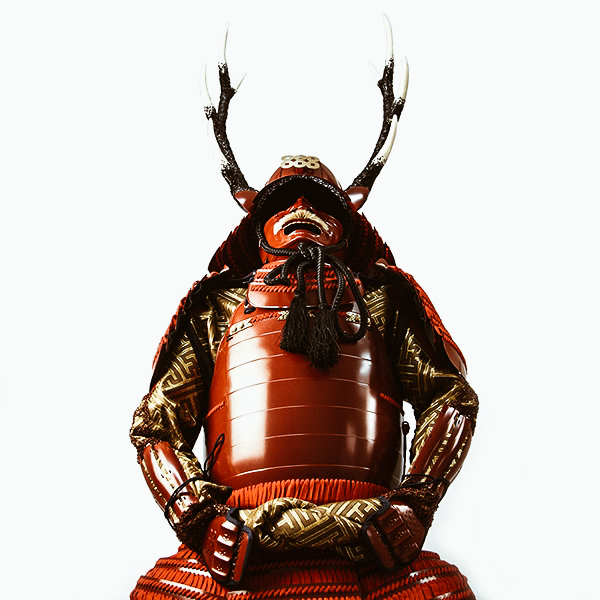
Photo Credits: tozandoshop.com
14 anni dopo che Sanada padre e figlio erano stati mandati in esilio, Nobushige si sarebbe ribellato contro i Tokugawa di nuovo durante l’assedio invernale di Osaka, e ancora una volta l’anno successivo nella campagna estiva. Nobushige aveva costruito una fortezza a forma di mezzaluna nell’angolo sud occidentale del Castello di Osaka, noto come Sanada Maru. L’avamposto fortificato era circondato da un fossato ampio, profondo e asciutto. La terra del fossato era ammucchiata all’interno, e lungo la cima di questo terrapieno c’era un semplice muro di legno a due piani, con piattaforme ad intervalli regolari. Apparentemente il Sanada Maru era armato di cannoni lungo le mura. Sanada Nobushige e circa 7.000 uomini respinsero ripetutamente circa 25.000 alleati dei Tokugawa. A volte i samurai di Sanada lasciavano i confini del Sanada Maru per contrattaccare le truppe nemiche.
L’anno seguente, durante l’assedio estivo di Osaka, Sanada Nobushige comandava il fianco destro delle forze di Toyotomi. Il 3 giugno, nonostante fosse completamente esausto dalla battaglia contro le forze di Date Masamune, Nobushige ed i suoi uomini erano tornati al Castello di Osaka per trovare le 150.000 uomini di Tokugawa che si preparavano a fare un ultimo assalto. Sperando di prenderli alla sprovvista e distruggere le loro formazioni, Nobushige mandò suo figlio, Daisuke, per istruire Hideyori a cercare opportunità per uscire dal castello e attaccare i Tokugawa.
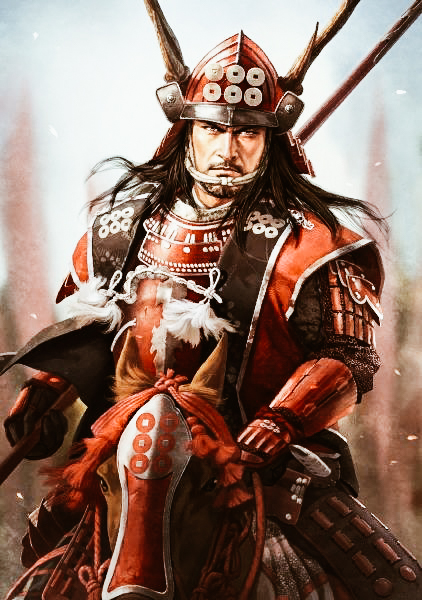
photo credits: pinterest.it
Tuttavia, al momento dell’attacco, Hideyori sembra aver perso il controllo e non riuscì a lanciare il contrattacco che avrebbe potuto invertire l’assedio. Le truppe dei Sanada furono sopraffatte. Gravemente ferito nella feroce battaglia contro Matsudaira Tadanao che lo aveva impegnato per la maggior parte di questo giorno, dalle 12 alle 17, Nobushige si sedette sotto un pino nel terreno del Santuario Yasui, incapace di proseguire. Quando l’ondata di forze nemiche si avvicinò, disse con calma il suo nome, e nel dire che era troppo stanco per continuare a combattere, permise a un samurai dei Tokugawa di nome Nishio Nizaemon di prendere la sua testa. Sanada Nobushige aveva 47 anni. La notizia della sua morte si diffuse rapidamente e il morale tra le truppe di Osaka cadde.
Il nome Yukimura venne conosciuto in tutto il Giappone a causa dei suoi combattimenti senza paura.
Shimazu Iehisa di Satsuma ha elogiato Yukimura, scrivendo “Sanada era il più grande guerriero in Giappone, più forte di qualsiasi guerriero nelle storie dei tempi antichi. L’esercito Tokugawa era mezzo sconfitto. Dico questo solo in generale.”
Una statua dello stanco guerriero si trova ora sotto l’albero di pino di seconda generazione nel terreno del santuario.
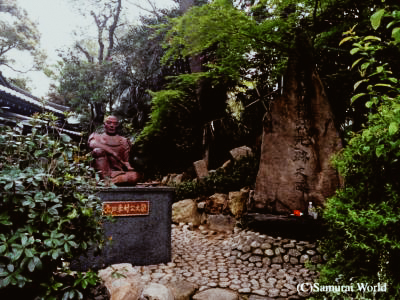
photo credits: samurai-world.com
Condividi:
- Fai clic per condividere su Facebook (Si apre in una nuova finestra)
- Fai clic qui per condividere su Twitter (Si apre in una nuova finestra)
- Fai clic qui per condividere su Tumblr (Si apre in una nuova finestra)
- Fai clic qui per condividere su Pinterest (Si apre in una nuova finestra)
- Fai clic per condividere su Telegram (Si apre in una nuova finestra)
- Fai clic per condividere su WhatsApp (Si apre in una nuova finestra)
- Fai clic qui per condividere su Reddit (Si apre in una nuova finestra)
- Fai clic qui per stampare (Si apre in una nuova finestra)






